Let's say that you're in the market for wheel spacers. Whether it's because you've added jumbo brakes, sprung for a set of custom wheels, or just want to widen your car's stance (the VIP look), you've concluded that spacers are going to do the trick for you, and will solve your fitment dilemma.

Typical Wheel Spacer Thickness
Looking at the available wheel spacers and their wide range of thicknesses, your next question is "which thickness of spacer is going to best serve my needs?" You need the 'Goldilocks' spacer: too thin, and you will still have wheel/caliper interference. Too thick, and your tires will hit the fenders. "Just right" will give you the brake clearance you need while avoiding fender rub.

A quick glance at the various spacers on our website reveals that thicknesses vary from about 1/8" all the way up to 1" or more. Size matters! You need to be absolutely certain that you are getting the most appropriate size. A difference of only 1/4" or less can make or break your fitment.
When it comes to spacers, we’ve got the Eibach Pro-Spacer Kit and Sparco Wheel Spacer for a wide range of makes and models. For trucks and SUVs, check out the Supreme Suspensions Pro Billet Series Wheel Spacer Set and Rugged Ridge Wheel Spacer Kit. Crown’s Wheel Spacer set specializes in Jeep models. If you need universal-fit spacers available in a choice of common dimensions, there’s the Dorman Wheel Spacer, Mr. Gasket Silver Aluminum Wheel Spacers, and Baer Polished Billet Aluminum Wheel Spacers (metric).
How To Determine Exactly How Much Wheel Spacer Size You Need
Because the thickness of spacer you need will vary depending on individual customizations you’ve performed, determining that correct thickness is extremely important. But how? You can try to measure the wheel/tire combo and make your best guess as to how much further out the wheel needs to sit; however, this is not easy to do in a consistent and repeatable way. It’s also impractical to order spacers in various thicknesses, perform a series of test fits, and then use only the ones which work. In light of all this, we’ve got a solution which provides an accurate answer while costing little in the way of money, effort, and time.
This method involves the use of regular hardware-store type washers. If you're a home handyperson, you may already have a variety of sizes on your shelves already. If not, you can visit any hardware store or review our selection here. You want to use plain flat metal washers, NOT lock-washers, split washers, or plastic washers.
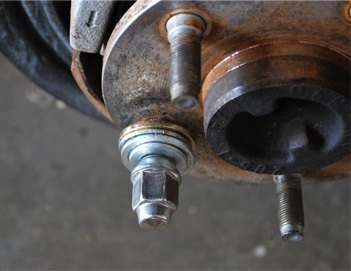

Make certain that the washers you buy have an inner diameter (ID) large enough to pass over your vehicle's wheel studs or lug bolts. Since we’re temporarily using the washers to simulate wheel spacers, they must fit. Washers are sized by inner diameter, so for example, a 5/16" washer is designed to be able to fit over a 5/16" diameter bolt. (The washer's inner diameter is actually slightly oversize to provide some tolerance.) Washer thickness varies, from approximately 1/16" to 3/16".
This method calls for use of multiple washers on each stud. For example, a typical 5-bolt wheel may require up to 8 washers per stud (figuring a 1" maximum spacer thickness). In a worst-case scenario, 40 to 50 washers may be needed. A box of 50 5/16" washers should cost less than $6, and, they're reusable for other purposes once you are done! For best results, we recommend using washers of the same diameter and thickness for this test.
If Your Vehicle Is Equipped With Lug Nuts
Here's the method: if your vehicle is equipped with wheel nuts (and therefore has studs which project out from the hub), begin by placing an equal number of washers on each stud. Start small, and place only one or two washers on each. Test-fit the wheel. Be very careful of your wheel/caliper clearance! You don't want to damage new parts, so don't rotate the wheel. If you need additional clearance, add only one additional washer at a time onto each stud.
Presuming that you had clearance issues at the brake, you want to add only enough thickness to clear the caliper. How much clearance is enough? Many experts we spoke to said 1-3 millimeters. Another professional said that passing a piece of paper through the opening will do it. The truth is that "clearance is clearance", so if it clears, even by the slightest amount, you will have the spacing you need. When the wheel is bolted to the proper torque, the clearance will not change.
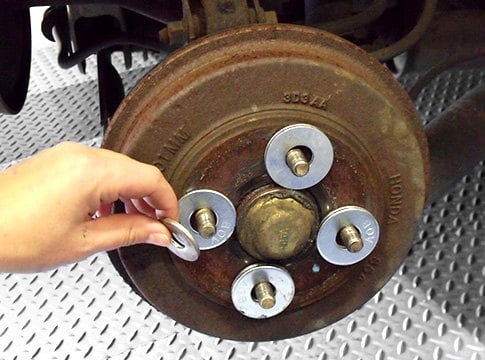
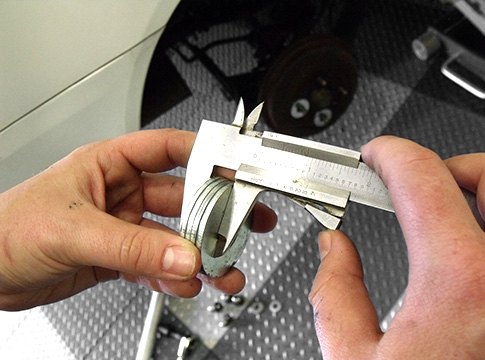
Remember that as you add spacers to clear potential caliper interference, you are pushing the wheel/tire combo closer to the fender. Don't solve one problem and create another; you need adequate clearance on both sides.
Once you are satisfied that the number of washers on each stud gives you the desired clearance, remove the wheel, remove all the washers from one stud, and measure the total thickness of the washers. THIS measurement is the size wheel spacer you need. Again, during this procedure, you should have had the same number of washers on each stud. If not, begin again, and when you have the spacing you want, measure the washers.
If Your Vehicle Is Equipped With Lug Bolts
If your vehicle uses lug bolts (which tighten into threaded holes in the hub), our method is slightly more cumbersome, but still doable. In this case, pass all the wheel bolts through the wheel, then add washers to the bolts on the back side of the wheel.
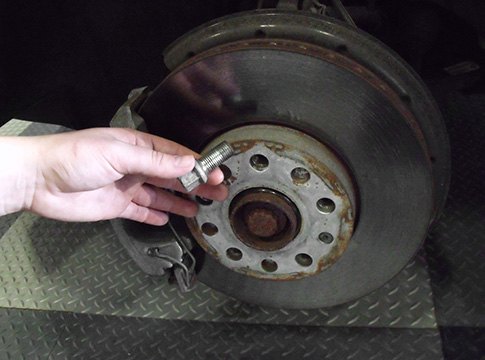
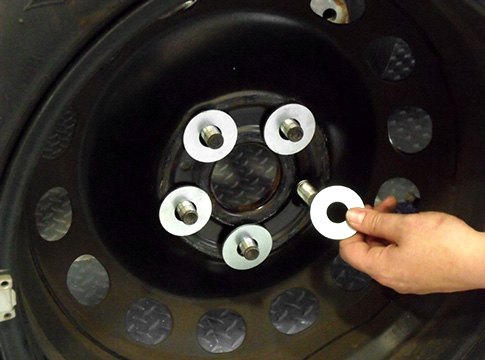
You need to keep the wheel oriented vertically so that the washers don't fall off the bolts. Install the wheel, and add/subtract washers as discussed above. When you are happy with the fitment, measure the total thickness of the washers used on one wheel bolt.
Thread Engagement
When installing spacers, whether your ride uses wheel nuts or bolts, there is one more important consideration - "thread engagement". This refers to the number of threads which are covered, or engaged, during installation. Although the exact measurement varies by stud/bolt size, in general, the bolt or nut should turn from 6.5 to 8 turns during engagement. The use of any spacer much thicker than 1-2mm (0.04"-0.08") may prevent full thread engagement, and additional action would be necessary.
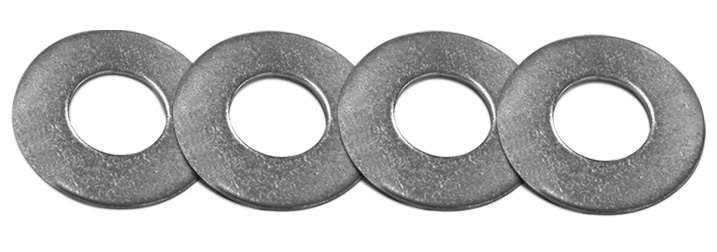
You have several options. Sometimes, longer bolts or studs can be used. One variation on this theme is "ET" (extra thread) lug nuts. These are commonly used when lug studs are just a little too short. They have a small "shank" that protrudes into the wheel past the lug seat, providing the extra thread contact you need. Note that the lug hole in the wheel must be able to accommodate the ET lug nuts.
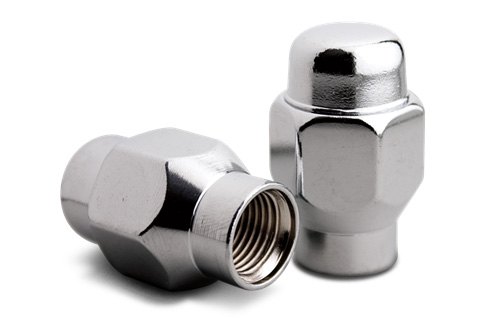
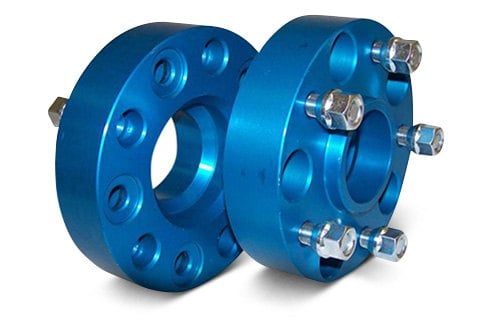
Other times, a spacer/adapter (a spacer plate with its own studs or threaded holes) will solve the problem. Be safe! Make sure that your wheels are properly and securely attached.
Hub Centric Rings
If you’re installing aftermarket rims, another factor to consider is the fact that some aftermarket wheels are built with an oversized center bore (circular opening at the center) that has a larger diameter than the wheel hub of the vehicle(s) they’re designed to fit onto.
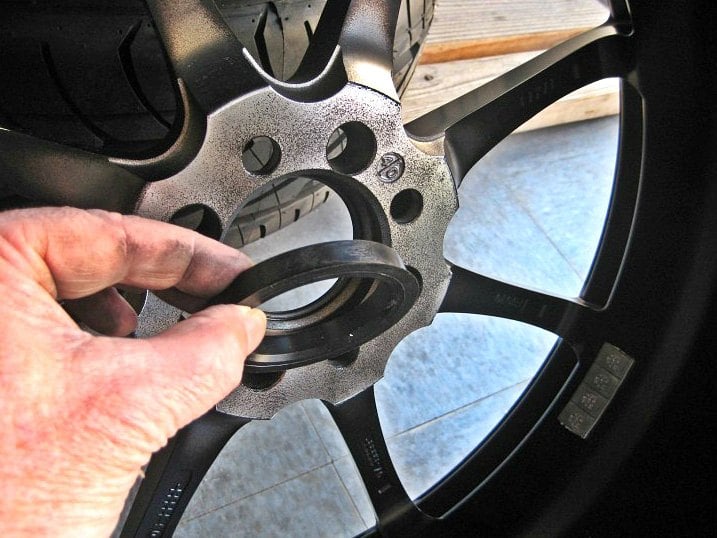
When too large a gap exists here, the new wheel will not be “hub centric” as it should be. Such a gap may not even be noticeable to the eye, but it can cause a shimmy when the wheel rotates.
So if the outer diameter of your new wheel’s center bore is larger than the inner diameter of your existing wheel hub, a set of hub centric rings (also known as “hub centering” rings) will fill this gap and eliminate any loose fitment issues. We’ve got the Project Kics Hub Centric Ring that’s available in a variety of sizes to fit your needs.
Hub centric rings are also useful if you’re swapping OEM rims from one vehicle make to another with a matching bolt pattern, but a smaller hub.

The nice thing about the "washer method" is that it costs very little money, involves no guesswork, only needs to be done on one wheel per axle, and can be done in your garage or driveway. Once you have "that number", order up the appropriate wheel spacer, bolt up your wheels, and enjoy the ride!

